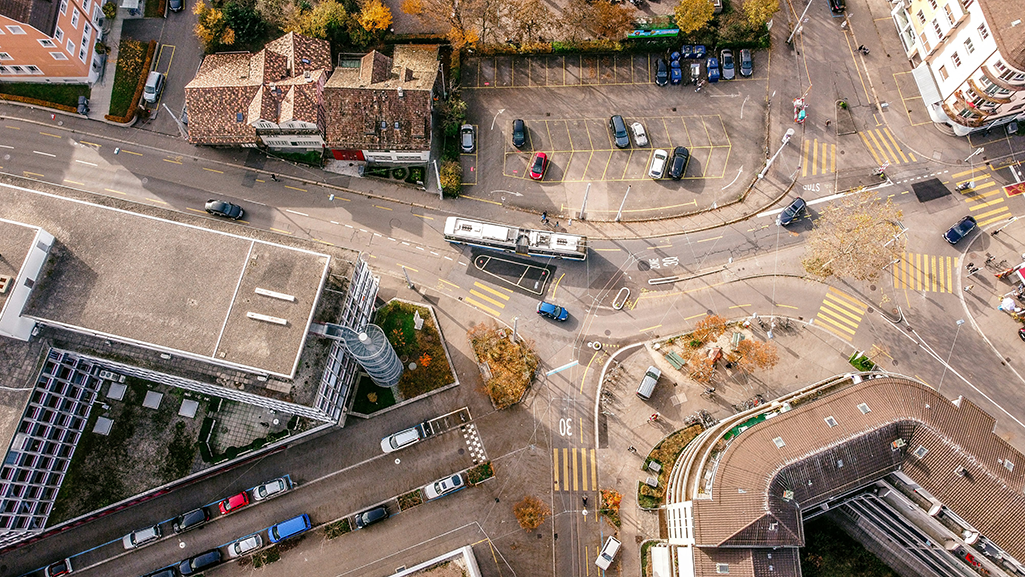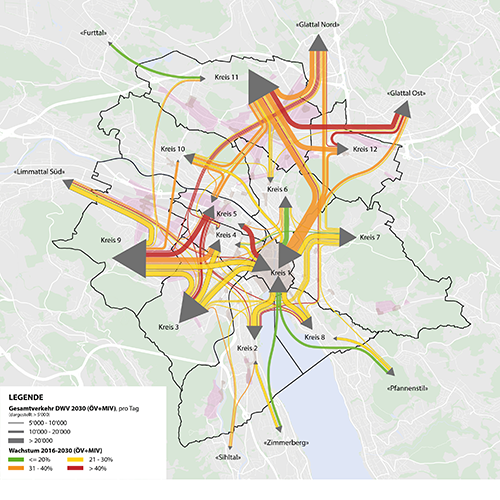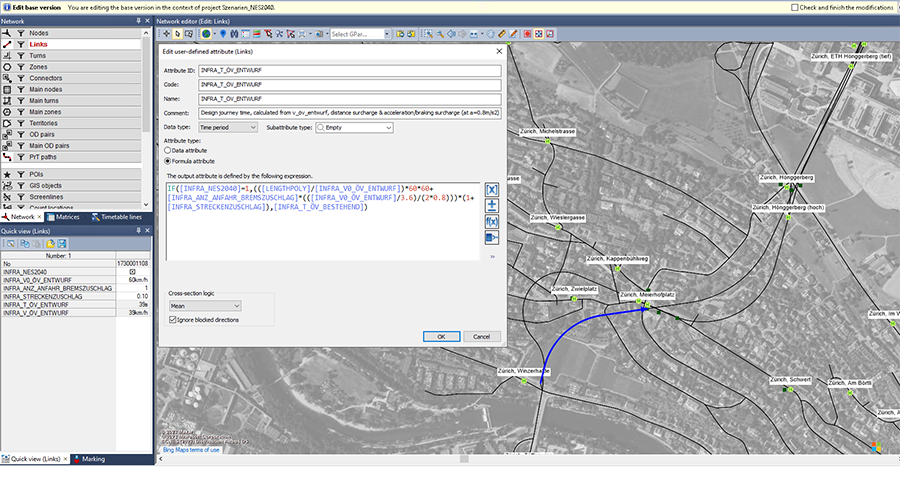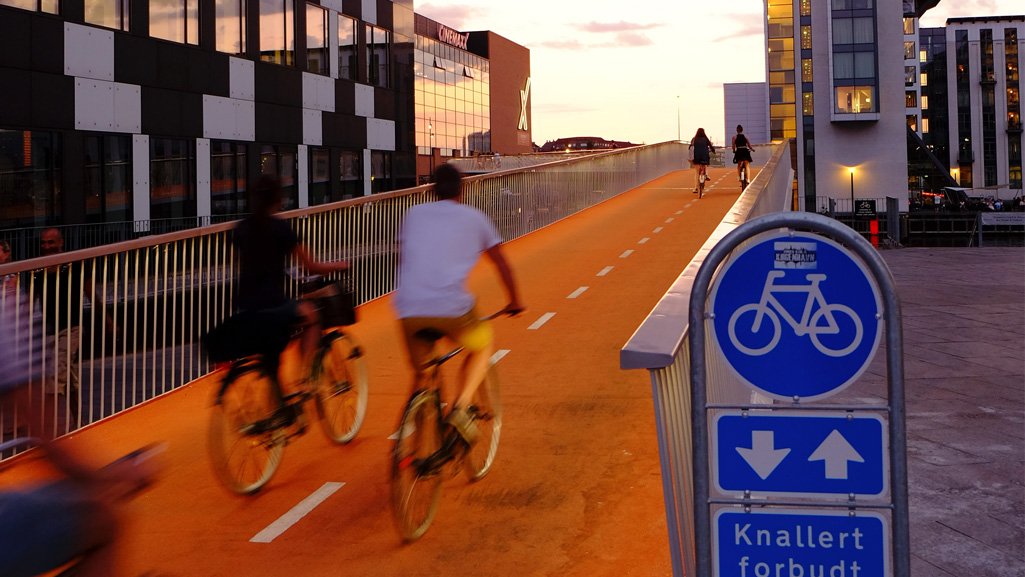Zurich is growing! With up to 100,000 new residents and 40,000 new jobs predicted by 2040. The new residents and commuters will generate additional traffic. This is a challenge for the Zurich Public Transport Authority (VBZ), which will have to adapt its capacities to the predicted growth with far-sighted network development. An important tool for this is traffic modeling, which can be used to show the effect of a particular measure.
Growth of car traffic not desired
The expected additional traffic should be handled exclusively by public transport, walking, and cycling. An increase in motorized private transport is neither possible nor desirable in a densely built-up city – and is simply not accepted by the population. It is therefore important to promote those modes of transport that can move the greatest number of people using the least amount of space.
This is where public transport has clear advantages over cars. These advantages can be best exploited if public transport is consistently given priority at intersections and runs on its own routes. If a tram, for example, shares the road with cars, it runs the risk of getting stuck in a traffic jam. This not only increases travel times and reduces reliability, but also decreases the quality of service for passengers. Ultimately, this would result in lower usage and thus failure to achieve the overall transportation policy goal. Public transport plays a central role in Zurich. To keep it that way in the future, we need solutions that can meet the challenges ahead.
The growth of the City and the desired changes in mobility also pose challenges for us as data and mobility analysts at VBZ. We use our traffic and data technology expertise and various models to provide traffic and service planners with important information about future mobility needs and the impact of expansion measures. To face these challenges, we use a macroscopic traffic model, created with PTV Visum. This traffic model was developed by the Mobility Department of the Canton of Zurich in collaboration with the City of Zurich and has proven successful in other projects.
Macroscopic traffic model required
Where is public transport already heavily used and where is it not? Where is a general increase in traffic expected? Where should public transport play a greater role, and where are capacity bottlenecks expected with the existing service?
These are common questions that arise at the outset of every project, which can be answered with a comprehensive analysis of the traffic model and existing forecasts. Thanks to the excellent statistical basis provided by the model and other sources, a broad team of experts from various disciplines and external engineering firms were able to outline initial solution concepts for public transport.
The complete range of traffic demand calculation
This team of experts was able to continuously refine the initial and high-level solution approaches and develop concrete network variants, which we tested for their effects using the traffic model. The EVA (passenger demand model) was used, which calculates the complete range of traffic demand with trip generation, mode choice and trip distribution. Questions of particular relevance to VBZ, which were included in the network development strategy 2040, included:
- Will there be enough passengers for the planned lines?
- Are lines competing, or will the desired congestion relief occur?
- Can sufficient capacity be provided for the projected increase in demand?
- What about the economic viability of future services?
- Can VBZ contribute to the city’s transportation development goals, such as reducing car traffic?
Evaluation of economic efficiency
To evaluate economic efficiency, we compared the corresponding operational metrics (service kilometers and service hours) from the respective networks in Visum with the calculated passenger numbers (boarding passengers and passenger kilometers).
The evaluation options from the transport model are very extensive and difficult to grasp in their entirety. We therefore developed separate dashboards for the respective parameters from Visum, which made the results more visually tangible for an audience outside the traffic modeling world.
Deriving a target network
The findings were iteratively incorporated into the adjustments to the network variants. The team of experts compared these with other issues, such as urban planning, and was thus able to derive a target network.
This target network also needed to be phased: Which goals can actually be implemented step by step in concrete and functioning subnetworks in the respective prioritization?
What was/is challenging?
The number of possible network variants is as unlimited as the creativity of planners. Although the Visum Scenario Manager provides a good way of keeping track of the different network variants, it is important to focus on the essential changes. Not every network variant can be examined in detail right from the start. Simply because there is not enough time. It is always important to look at the big picture and not get lost in the details. However, there are still a few details to keep an eye on.
Challenging granularity of input variables
A major challenge in this process is the necessary granularity of the input variables for the actual traffic modeling. Even at an early planning stage, it must be considered that it makes a significant difference how a tunnel route is planned. Should the route be as straight and deep as possible through the hills, with short travel times end to end but long access times to deep tunnel stations? Or is a near-surface route with curves and longer travel times, but shorter access times to the stations more appropriate?
Test planning was necessary to start modeling with reliable input data and to estimate approximate route positions and possibilities without pushing the limits of physics.
The cantonal transport model is calibrated to a , so we rely on a corresponding timetable-based assignment for each variant. However, this also requires corresponding timetable designs for future lines. Depending on their design, these will have an impact on the attractiveness of public transport and the calculated demand. Which stops? What frequency? What travel times? The challenge was to reconcile the necessary trade-offs between time and level of detail, despite the abstract nature of the overall project.
Predicting the future of transportation
So, can VBZ predict the future of transportation? The answer is yes, but only with the right know-how and tools.
For example, the results of traffic modeling can provide an essential basis for further planning steps. They turn the 2040 network development strategy into a master plan. Its stages are necessary to ensure that public transport in Zurich can meet its challenges in the long term and uphold the level of service that the population values.
Project website (German): Ring frei für Zürichs Mobilitätszukunft – Stadt Zürich
The authors

Christoph Baur
Mobility Analyst at Verkehrsbetriebe Zürich

Franz Bleck
Mobility Analyst at Verkehrsbetriebe Zürich






